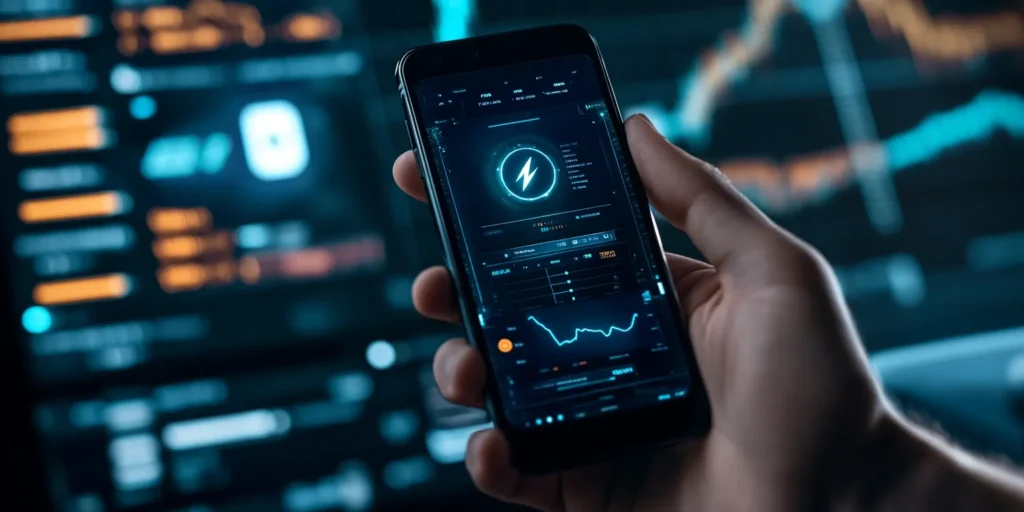Introduction
Mining crypto with a GPU remains one of the go-to methods for earning digital currency. It’s powerful, accessible, and still profitable under the right conditions. But there’s a lingering question that even seasoned miners keep asking: does crypto mining damage GPU?
In this guide, we break down what really happens to your graphics card during mining, the actual risks involved, and how to protect your hardware from turning into a very expensive paperweight.
Understanding GPU stress during mining
When you mine crypto with a GPU, you’re essentially asking it to perform nonstop complex calculations. The load is steady and relentless—unlike gaming, where performance spikes and dips depending on action and resolution.
This continuous pressure means your GPU runs near full capacity, generating sustained heat and wearing out mechanical parts like fans. Over time, that can take a toll—especially if you treat your card like it’s immortal and immune to basic thermodynamics.
Does crypto mining actually damage a GPU?
Yes — If You Ignore It
If your GPU spends its life running at 85°C or higher, with minimal airflow and zero maintenance, then yes, it’s going to degrade. Heat is the enemy here. It wears down VRAM, weakens solder joints, and shortens the life of cooling fans. Basically, mining in bad conditions is like running a marathon in a winter coat.
No — If You Respect It
Surprisingly, when properly configured, mining can be gentler than gaming. Why? Because the GPU load during mining is consistent. No sudden spikes. No dramatic scene changes. When kept at a healthy 60–70°C, and paired with undervolting and reduced power limits, your GPU can mine for years without complaint.
Best practices to prevent GPU damage while mining
- Monitor and Limit Temperature: Use tools like MSI Afterburner to set safe thermal targets. Keep your GPU below 75°C consistently. Boost airflow with open cases or extra fans.
- Reduce Power Consumption: Lower your power limit to 70–80%. Undervolt your core voltage to minimize heat. You’ll save money on electricity and extend your GPU’s lifespan.
- Maintain Proper Cooling: Regularly clean fans and heatsinks—dust is not a performance enhancer. Replace old thermal paste on aging cards. Don’t cram six GPUs into a case built for two—space and airflow matter.
- Avoid Constant 24/7 Operation: Give your GPU some rest. It’s not a robot. Well, it kind of is—but even robots overheat. Use mining software that allows for interval breaks or auto-pauses.
- Choose the Right Algorithm: Not all mining algorithms are equally punishing. Lighter algorithms like Autolykos (used by Ergo) produce less heat compared to Ethereum Classic’s Ethash.
How to check if crypto mining damaged your GPU
Spotting trouble before it’s too late? That’s the move. Here’s how to monitor your GPU like a pro:
- Track temperatures, fan RPM, and clock speeds regularly
- Use GPU-Z or HWMonitor to get real-time data
- Run stress tests or benchmarks to detect stability issues
If issues arise during monitoring or stress testing, take immediate action: deep clean the card, check for dust buildup, reapply thermal paste if necessary, and underclock slightly to reduce strain. If problems persist, professional repair or warranty servicing may be needed.
Signs your GPU might be failing
Don’t panic—but do pay attention to these red flags:
- Sudden drops in hash rate or inconsistent performance
- Artifacts, glitches, or screen flickering
- Strange noises—clicking fans or coil whine that wasn’t there before
If you detect any of these symptoms early, the best move is to immediately stop mining, clean your GPU thoroughly, reapply thermal paste if temperatures have been rising unusually, and run diagnostic tests like FurMark or 3DMark to assess stability. Early intervention can save your card from permanent damage.
Is used mining hardware reliable?
Buying a used GPU from a mining rig might sound risky, but not all pre-loved cards are doomed. Many miners undervolt and maintain their cards well—some even better than your average gamer.
Before you commit:
- Inspect for physical damage, corrosion, or signs of overheating
- Ask about operating history—temps, usage hours, environment
- Request recent benchmark tests or stress results to verify performance
- Check if any manufacturer’s warranty remains and confirm if it’s transferable
- Test it under load to see if it performs normally before finalizing purchase
You wouldn’t buy a used car without a test drive. Same logic applies here—and a little extra caution goes a long way toward protecting your investment.
How long can a GPU last while mining?
A well-maintained GPU used for mining can last anywhere from 2 to 5 years, and sometimes even longer. The real killer isn’t mining—it’s neglect.
If you keep your temperatures in check, clean your rig regularly, and avoid pushing your card to its absolute limits 24/7, your GPU might outlive your interest in mining altogether. Some miners still run older models like the GTX 1660 Super or RX 580 that have been hashing away since before NFTs were a thing.
Longevity also depends on what you’re mining. Algorithms like Autolykos, used in crypto mining in 2025, are lighter on your GPU compared to heavyweights like Ethash.
If you want your GPU to last:
- Undervolt, don’t overclock like it’s a race
- Clean it like you clean your coffee machine—often and carefully
- Don’t treat it like it’s disposable tech
Proper care turns your GPU into a workhorse, not a burnout.
Conclusion
So, does crypto mining damage GPU hardware? It can—but only if you treat your gear like it’s disposable. With smart temperature management, power adjustments, and regular maintenance, mining can be safe for your graphics card—and might even extend its usable life by keeping usage consistent and predictable.
Mining is about balance: power, performance, and preservation. Monitor your hardware, mine responsibly, and your GPU will thank you (in hash rate, not words).
Stay cool. Literally.



